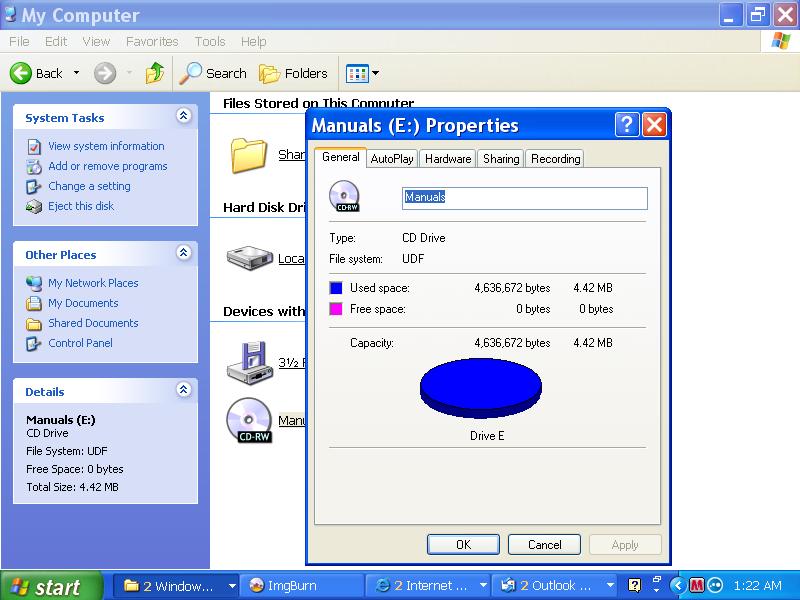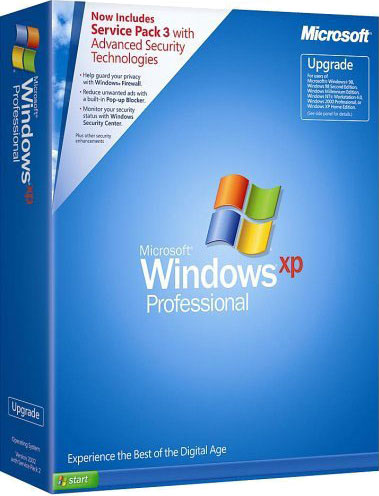Windows Xp Home Edition Service Pack 2 Iso Download
- Windows Xp Home Edition Service Pack 2 Iso Download Ps3
- Windows Xp Home Edition Service Pack 2 Iso Download Xbox 360
- Windows Xp Home Edition Service Pack 2 Iso Download Low Mb
This article is also available as a PDF download.

Applying a service pack after every reinstallation of Windows XP is a schlep and a waste of time, especially in a business environment. That's why it's a good idea to have a copy of XP with the latest service pack already integrated into it—a process known as slipstreaming.
But that's not nearly the end of the story. What about adding all the subsequent hotfixes/updates Microsoft has released since Service Pack 2 for Windows XP was released eons ago (August 2004, to be exact)? There have been more than 120 since then. Downloading and installing every one of them is no fun; doing it every time for every new Windows installation is plain crazy.
Windows XP Home Edition Service Pack 2 (HP OEM)Note: Application and Driver Recovery CD not included.No Serial! (If you are not using VMWare's Easy Install)If. I still use xp for retro gaming as well sad a few windows programs don't work with newer windows no matter what workaround you try to do - I got a had full of games that don't install on newer windows but loads right up and plats excellent on good old xp was playing on it today I just wish newer motherboard would allow xp cause my xp rig is. Although it is possible to download an.iso image of an XP installation CD, it is not recommended. Difference between something legit and something else riddled with malware. Pity since you presumably have the license, but that's just the way it is.
Even so, you can't really take a chance on ignoring the updates. Venturing onto the Internet without the protection of the latest updates and patches is downright dangerous. Tests have shown that Windows vulnerabilities can be exploited within minutes after exposing such a system on the Net.
So wouldn't it be great if you could integrate all (or at least most) of those Microsoft updates right into a copy of XP, together with the latest service pack? Well, you can—and it's a relatively simple process. And once you've done it the first time, subsequent procedures (to make new CDs with the latest updates) is a walk in the park.
To top it all, you can even add some useful utilities to your customized version of Windows and make the disk bootable.
Windows Xp Home Edition Service Pack 2 Iso Download Ps3
I'm going to walk you through the whole process of first slipstreaming your copy of XP with SP2, integrating most of the updates/hotfixes since the release of SP2 into your new installation pack, and then burning the image to a bootable CD.
Slipstreaming with SP2
Let's first slipstream XP with SP2:
- If you don't already have it, get the full ('network installation') version of the service pack. You can download it here. For the purposes of this article, we'll save it to the folder XP_SP2 on the C: drive.
- Copy the contents of your Windows XP CD to your hard drive. We'll name this folder (also on the C: drive) WinXP.
- Open a command prompt and go to the folder containing SP2 (XP_SP2 in our example).
- Type the command: servicepackfilename /integrate:drive:XPfolder. In my example, the command is:
WindowsXP-KB835935-SP2-ENU /integrate:C:WinXP
See Figure A and Figure B.
Figure A |
| The command to integrate the service pack |
Windows Xp Home Edition Service Pack 2 Iso Download Xbox 360
Figure B |
| The integration process |
If the process has been successful, a message to this effect will be displayed (Figure C).
Figure C |
| Success! |
Note
When you try slipstreaming using OEM disks from some big companies, you might run into the following error:

'This Service Pack cannot be integrated into a destination that also has integrated Software Updates.'
Not to worry, there are ways and means. A program called nLite will do the trick (although it needs the .NET framework).
Integrating post-SP2 updates
Now we're ready to integrate most of the post-SP2 updates, thanks to a guy called Ryan VanderMeulen. As Ryan says on his Web site, his update pack and Integrator software are 'designed to bring a Windows XP CD with SP2 integrated fully up to date with all of the latest hotfixes released by Microsoft since SP2's release. It accomplishes this task via direct integration, where files on the CD are directly overwritten by the updated files'. He also says: 'All necessary registry entries needed by Windows Update, QFECheck, and Microsoft Baseline Security Analyzer are imported during Windows setup, meaning that the integration is transparent to Windows. Security Catalogs necessary for Windows File Protection to recognize the updated files as digitally signed are installed, once again ensuring maximum transparency to Windows. Since the updated files are being directly overwritten on the CD, this pack has the minimum possible amount of overhead associated with integrating hotfixes in comparison to other methods—both in space used on the CD and in Windows installation time.'
Sound good? It sure is!
A word of warning before you begin: Ryan strongly recommends that you start with a fresh XP installation source with no previous update packs integrated into it.
With that out of the way, let's get down to business.
- Download the latest version of RVM Integrator and Update Pack (also the optional add-on packs if you want to—see note) here. On this page, you'll see the list of the included updates.
Note
Ryan has several add-ons available. One includes some useful programs and utilities; another integrates Windows Genuine Advantage Validation (KB892130) into the XP install CD.
- Start RVM Integrator. At the top of the screen you'll see the message Browse to the location which contains the i386 directory. In our example, that's C:WinXP (Figure D). Note that this is the root folder that contains the i386 folder (do NOT select the i386 directory!).
Figure D |
| Providing the path to the i386 folder in RVM Integrator |
- The detected version of Windows will be displayed. You can also select a destination directory if you want to create the new installation source in a different folder. Otherwise, leave the field blank.
- Select Choose An Update Pack CAB to browse to the location of the update pack. My update pack was called rvmupdatepack2.1.1.7z. In your case, the version might be different.
- If you downloaded any add-on packs, add them next.
- The final step is the integration. Click Integrate, and the process will start (Figure E). Go get yourself another cup of coffee.
Figure E |
| RVM Integrator doing its job |
Creating a bootable CD
To make our bootable CD, we'll use Bart's approach. Bart Lagerweij, as you probably know, is the doyen of boot disks. I'll provide an overview of the steps, but if you want to read Bart's full instructions on how to create a bootable Windows XP CD, go here.
Other methods are available. If you already have a preferred way, by all means go ahead and use that. You can, for example, use IsoBuster and Nero Burning ROM 6 (you'll need at least version 5.5.9.0) or you can use nLite (but you'll need .NET framework installed).
I prefer Bart's way. Apart for a couple of small extras you need to download the first time, you won't need things like the full version of Nero and .NET like other methods. Besides, I just love to watch Bart's command-line magic.
Here are the essential steps:
Windows Xp Home Edition Service Pack 2 Iso Download Low Mb
- Download Bart's BCD software (523 KB).
- Unzip BCD to a folder. We'll unzip it to c:bcd for this example.
- Download the file wnaspi32.dll from here and copy it into BCD's bin folder (in our example, to c:bcdbin).
- Download this Windows XP file (5 KB). Unzip it into BCD's root folder (c:bdc in our example). Make sure the subfolders are also unpacked.
- Copy the i386 folder (in our example, from C:WinXP) into one of the following folders, depending on whether it's Windows XP Home or Professional:
c:bcdcdswxphomefiles (Windows XP Home Edition)
c:bcdcdswxpprofiles (Windows XP Professional) - Copy the win51ic.SPx or win51ip.SPx file here as well (See Figure F). Optionally, you can also copy the following files (not needed for bootable CD installation):
Figure F |
| Copy the files to the relevant locations in the bcd folder |
Note
If you have a Windows XP CD from MSDN, edit the file i386txtsetup.sif:
and change the setup source path to:
Now you're ready to roll. Open a command prompt, go to the c:bcd folder, and type in and run one of the following commands (depending on whether it's XP Home or XP Pro):
bcd wxphome (For Windows XP Home edition)
or:
bcd wxppro (For Windows XP Professional)
This will start creating the bootable ISO image and burn it to a CD for you. Armed with this CD, reinstalling XP or installing it on new machines will be a breeze.
Not only should you not need XP service pack 1 in the normal course of things, you shouldn't be asked to insert it. This sounds as if you are using some manufacturer-supplied CDs to restore the computer to its 'fresh from the factory' condition.
What is the state of your computer at this point? That is, when the process stops because you don't have the next CD, is the system stable running XP with no service packs?
FYI, XP service pack 1a (which is no longer available, AFAIK, from an 'official' Microsoft source) is identical to XP service pack 1 but for the removal of the 'Microsoft Java Virtual Machine,' which was Microsoft's version of Java. Shortly after the release of sp1, Microsoft settled a patent infringement suit with Sun (the creator of Java) and part of the settlement required removal of the MSJVM from sp1, hence sp1a. Thus, if you are getting some message about a missing file if you use an SP1a CD, something else is going on, e.g., the 'Service Pack 1' CD that is being requested is not a Microsoft product but something put together by your computer manufacturer.
Microsoft no longer provides XP sp1 for download because XP Gold (no service packs) can be directly updated to service pack 2. The procedure for getting XP Gold fully updated can be found here (but this is a very old post, so some of the links no longer work) --> https://groups.google.com/forum/#!msg/microsoft.public.windowsupdate/4-jCtXsbshs/HBI-0476Wj8J
BTW, there is no such thing as 'SP1 for Windows XP Office Edition,' so don't try to use that.
It's possible that the file named xpsp1_en_x86.exe here is a legitimate version of XP sp1, but I have no information whatsoever about the reliability of this site or what the file actually is. For all I know, it could be infested with malware. Moreover, I really doubt that it will help you, even if the file really is a good copy of the official XP sp1 file, because your description of your problem sounds as if you need something else. --> http://slug.ceca.utc.edu/ftp/pub/windows/patches/winxp/